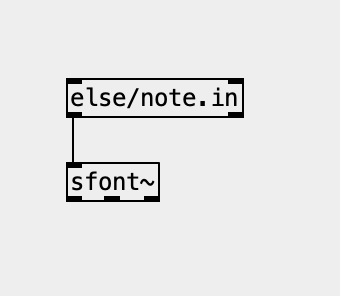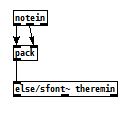-
-
-
atux
posted in technical issues • read moreHello,
what is the correct link with [else/sfont~] object ?
Thanks,
a.
Theremin.pd
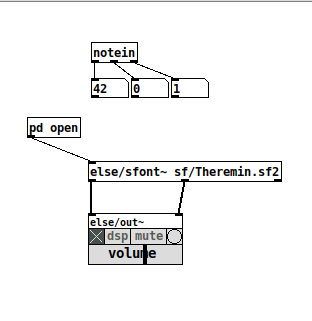
-
atux
posted in technical issues • read moreHello,
what is the best way in pd for simulating a pitch wheel, so that I can modulate the pitch in real time by moving a slider?
[pd 0.54 on Linux]Thanks,
a. -
atux
posted in technical issues • read moreHi all,
I have a txt file containing x,y values from multiple overlaid graphs.
For example, this txt file contains (x,y) coordinates for 4 independent graphs that start and end at different points::

Below I imported the data into a spreadsheet, separated it into different columns and plotted the graphs:
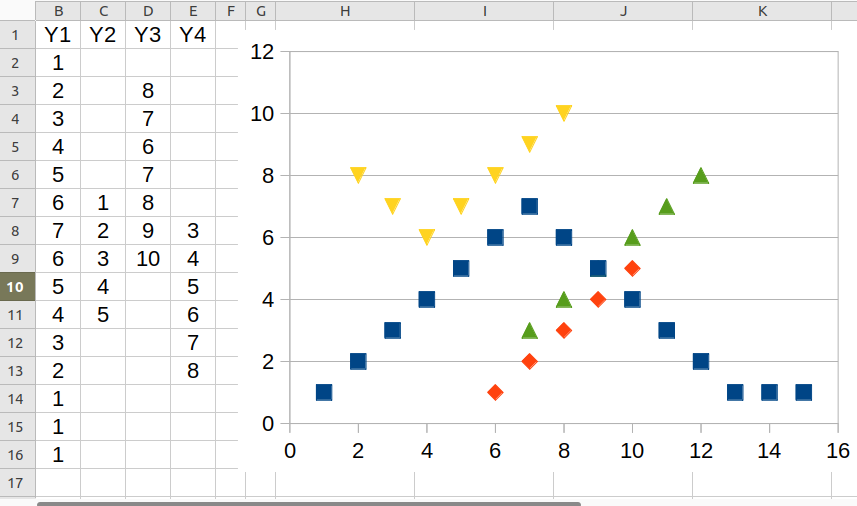
In PureData, is there a way to read a txt file of this type file and plot the four graphs on the same canvas?
test_graph.txtThanks,
a. -
atux
posted in technical issues • read more@oid said:
@atux Y-range goes from Ymax to Ymin.
So in the array properties it must be set:
x from min to max;
y from max to min.In fact, setting x from 0 to 11, y from 61 to 60, it's drawn correctly.
OK, thank you,
a. -
atux
posted in technical issues • read moreHi,
if the list of values is increasing from 60 to 61, why does the graph appear decreasing?
In the array1 properties I set x from 0 to 11, y from 60 to 61.
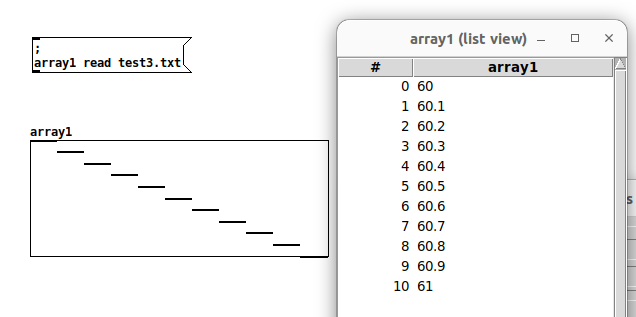
test_array.pd
test3.txt[pd 0.54.0 on linux]
Thank you,
a. -
atux
posted in technical issues • read moreWhen using soundfonts with instruments that have a significant transient such as piano, organ, strings, etc., is there a way to remove all transients (except the first note) so that, by scrolling "pitch" box number up and down, you hear a single continuous glissando?
Thanks,
a.
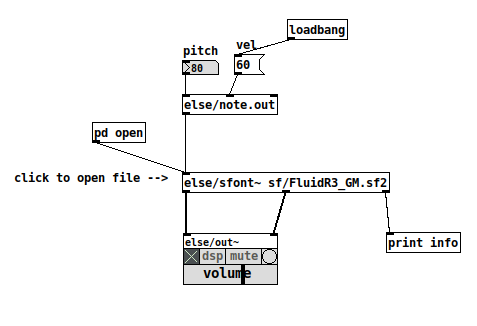
dis2con.pd -
atux
posted in technical issues • read more@FFW said:
[netsend]help for the[send(message says "same as list" so you can also do[hslider] | [list prepend z] | [netsend]Yes, that's how it works too.
pd2py_v3.pd
For less computational effort, is one preferable to the other, or are they equivalent?
Thank you,
a.

